Q&A: Sam Raimi’s New Dimensions in Oz
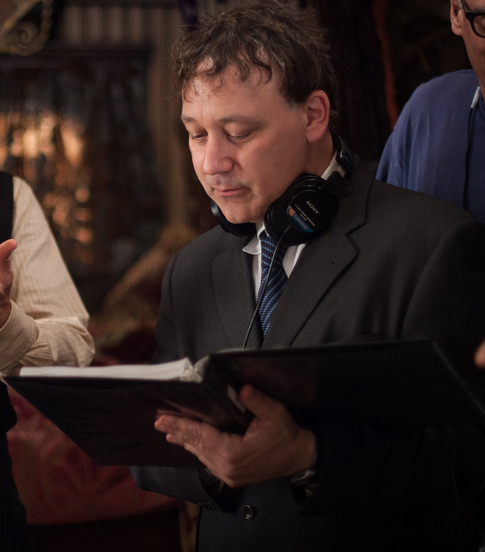 |
Few could make the leap from wrangling evil deadites to benevolent Muchkins quite like Sam Raimi, whose fantasy worlds thrill audiences without ever taking themselves too seriously. Having created an iconic character in Ash, and redefined one in his Spider-Man movies, he now finds himself with an even larger personality to keep safely – that of the land of Oz itself.
While I was not able to secure a 1:1 TR interview with Raimi, I did have the chance to participate in a group interview at the movie’s pre-Oscars press conference. We were instructed to stay on topic, so no new Evil Dead scoops here – but believe me, there’s plenty to talk about when it comes to the master showman’s use of 3D and perspective on L. Frank Baum’s fantasy world.
Question: In addition to being a history of Oz, this movie is also a kind of a metaphorical history of the cinema from being a carnival sideshow attraction to becoming a great force that can motivate crowds and inspire. What was it about The Wizard of Oz story that made you decide to merge these two themes together?
Sam Raimi: Well, what I was trying to do and what I think the screenwriters were trying to do and the art department, prop department, were trying to set up Oz’s knowledge as a tinkerer, Oz’s awareness of Edison’s kinescope and early motion picture cameras so that we could properly support the idea that he could have created this technology with the help of the tinkerers once he got to the land of Oz in the climax of the picture. So I wasn’t trying to do a history of cinema as much as set up the character with certain abilities in the first act to let them properly pay off in the third act.
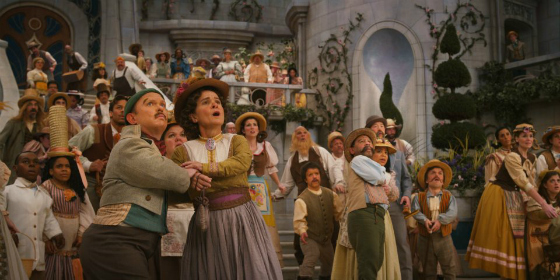 |
Question: This movie obviously demonstrates a lot of love for the original Wizard of Oz. But at the one moment when it appears to be a musical, the singing gets shut down promptly. Can you please talk about not going there as a musical?
SR: Yeah, that was a tribute to the great Wizard of Oz picture. But, um, early on I think the writers decided that we shouldn’t imitate that fantastic musical. There was no comparison to the great quality of music in the original, in fact. Ours was more based on the L. Frank Baum works. So we decided not to make it a musical, and just tell the fantastical tales that he had written about; but that one number was a tribute to the great Wizard of Oz movie. Did I answer your question?
Question: The visual effects were absolutely stunning and the 3D really, really worked for me. And I’m just wondering for you was there any particular big challenge for you this time around ’cause obviously you’ve worked with effects in the past. But was there anything in this particular shoot that was the most challenging for you?
SR: Yes, there were a tremendous amount of new challenges for me. I didn’t know anything about 3D so I had to go to school and learn about 3D. I had to meet with technicians and study the camera systems and go to effects houses and hear what the different visual effects artists had to say about working with the systems and I had to basically shoot some test days and see what the effects of convergence was on the audience and why the audience gets a headache. I used to get headaches at 3D movies and I didn’t want this movie to give people headaches, so I found out there are four reasons that [3D does that].
There may be more. I’m sure technical people at this point are going, “Raimi, you’re getting it wrong!” But I’ll tell you what I know, which is: you don’t want to dramatically change the convergence from shot to shot and have something breaking the screen plane in the foreground, and then quickly go to a shorter shot where there’s something in the deep background, and then again cut to a shot where you’re playing the convergence in the foreground. It has to be delicately handled. And you have to let the audience’s eyes adjust. Have longer shots, if you intend to make that dramatic adjustment. Or take them to a little stairway from convergence level to convergence level so that their brains can adjust and their eyes can adjust.
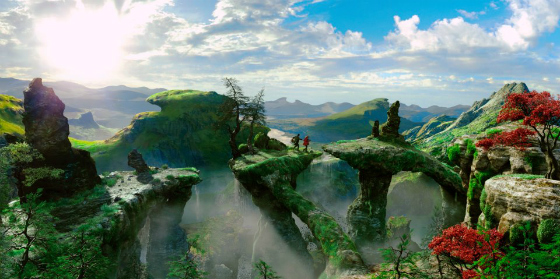 |
Otherwise you’re making their heads work so hard, it’s forcing those eyes, the muscles and the brain muscle to work in a way it’s not used to working and it gives headaches. You do develop a muscle for it, though. Uh, a tolerance for it, if you could say. That I developed. So I couldn’t trust my own instincts after a time. I had to just go by the numbers. What is the convergence on this. How different is it, etc.
In addition, I don’t want to turn this into a technical conversation, but it’s about where images are on the screen. You don’t want to make the audience look both left and right dramatically from cut to cut and change convergence. It’s just too difficult; too much of a strain. But it has to do with brightness, also. And it has to do with ghosting in the background and a minimization of that and a contrast ratio that’s much tighter than in a normal picture. And there’s a lot of other technical ways to minimize stress on the audience. Anyways, I had to learn so much about 3D. I had to learn about creating a whole world. I surrounded myself with the best artists. Not just actors but artists. Uh, storyboard artists, visual effects artists, concept artists, landscape artists, greenswomen and men and people that really knew how to create a world from the ground up because I had never created a world before.
Every single blade of grass and little blossom has been thought out by a individual artist. Every insect is not from a library, is not from nature photography. It’s created by artists. There’s little zebra bees. You can’t even see them. There’s strange little white-haired squirrels that are half-muskrat, half-squirrel, that inhabit this land and giant creatures that lope like dinosaurs, you see only in the background but everything had to be animated and designed so I’d never been part of anything so gigantic before. That was a new challenge.
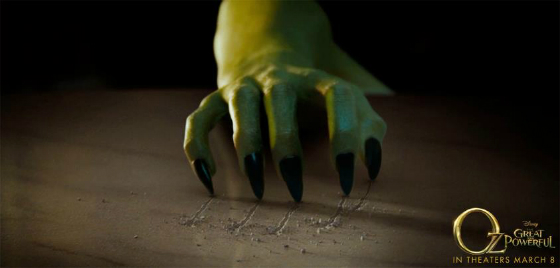 |
Question: Was there a temptation to make the Wicked Witch of the West a little more scary, given your background in horror?
SR: Well, I love making those horror movies but I was really guided by the performance and what her instincts were in playing that character. And she decided that she was playing her like a woman scorned. So she wasn’t really thinking about the fact that she was green, I think she was – she’s told me she was playing it as an innocent who fell in love and her heart was broken and she suffered.
And she couldn’t take the suffering, and wanted to end that suffering, and her sister was all too willing to let that suffering end and it awakened something that was already there but just fueled the fire of, I don’t know what you women call it, hatred, anger, mixed with love, jealousy, rage. Rage is a good word. That rage drove her. I wasn’t tempted to make it more like a horror movie. I wanted her to guide us and I would follow her with the camera.
Question: The Oz books have a legions of fans who are very loyal to it. Because of that, did you have any trepidations about sort of getting into that field? And, secondly, did it help having in the past done something like a Spider-Man, letting you know what it’s like to deal with legions who are very loyal to the printed material?
SR: Yes. Spider-Man helped me because I learned that you can’t be loyal to every detail of the book. Every filmmaker knows when you make a book into a movie, the first thing you have to do is kill the book, unfortunately. You’ve got to re-create it. But I decided I could be truest to the fans of Baum’s great work if I recognized what was great and moving and touching and most effective about those books to me. Just to me. And put as much of that into this picture as I could. And that’s so I was not slave to the details. But I was a slave to the heart and the soul of the thing. In as many ways as I could express it, I put it into this movie.
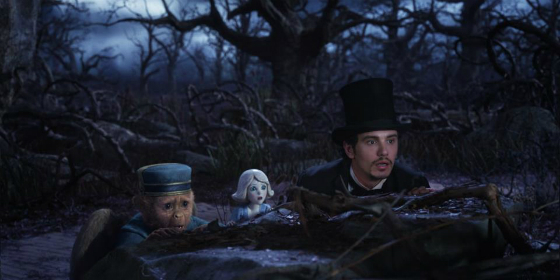 |
Question: Walt Disney wanted to tackle the land of Oz decades ago. I’m curious what it means to you to be able to bring home this thing that the man who started this studio wanted to do so long ago.
SR: Well, I had learned that Walt Disney wanted to make an Oz picture only recently, after we were done shooting, when the movie was almost finished. And the guys in the marketing department said, “Take a look at this reel we’re putting on the DVD” and it showed how Walt was trying to get the rights to the Oz books and how he was gonna get his army of Mouseketeers together to each play a part. That part, I didn’t think was gonna work very well, actually. That’s weird. For his show.
But anyways, it was a dream – a passion and dream of his, and I thought that was very touching because all I wanted to do was making the ultimate Walt Disney picture. I thought this movie always could be. It could be for families. It could be uplifting. And it makes sense in retrospect that it was Walt’s dream to make an Oz picture. And I hope that Walt would have liked the movie. There’s no violence in the picture so I think he would like that. We’ve got some classic Disney princesses and witches in the picture. I think he would like that. And he’s got those Disney, you know, little bluebirds and cuddly creatures like the blue monkeys. So I think he might have liked it. Unless he hated it. But it’s hard to say what he would have liked. I was honored to make it and surprised to find out that he had intended to make an Oz picture.
